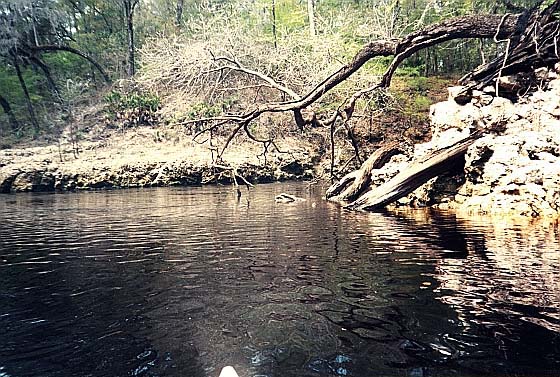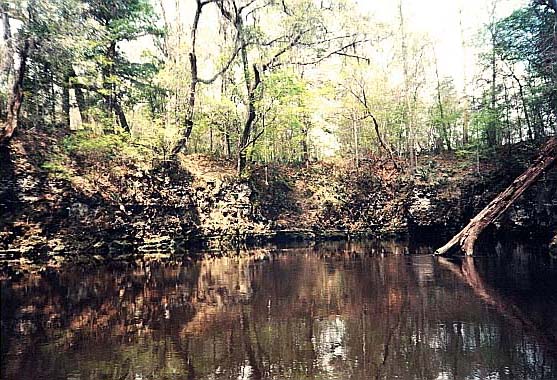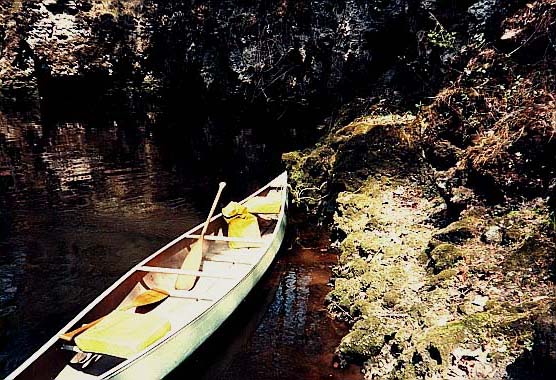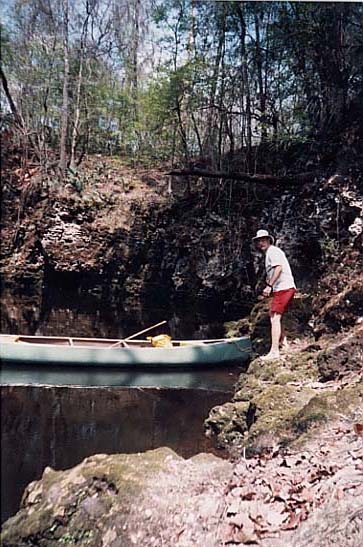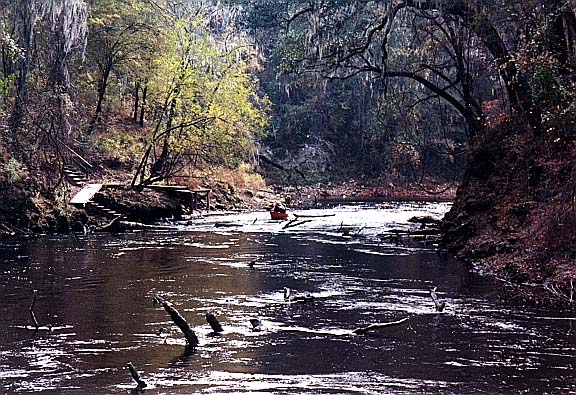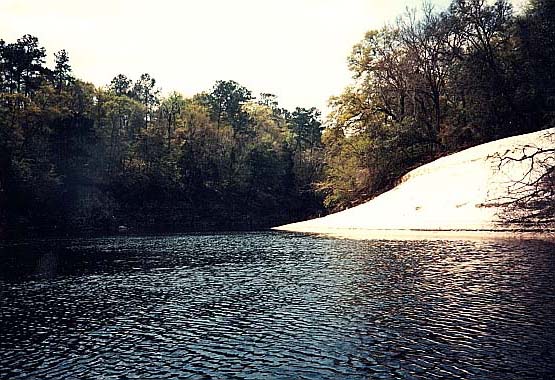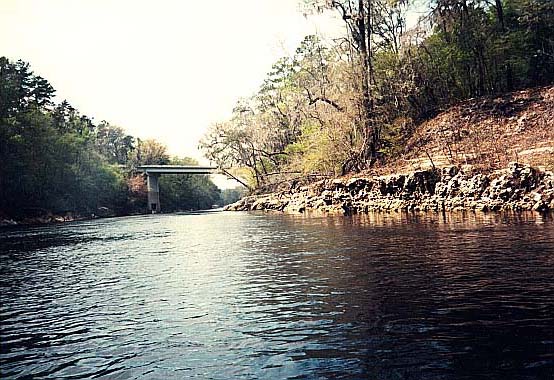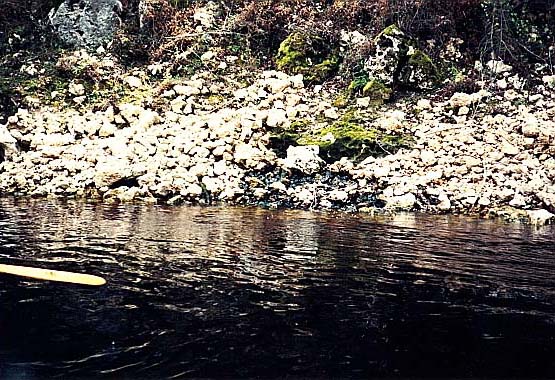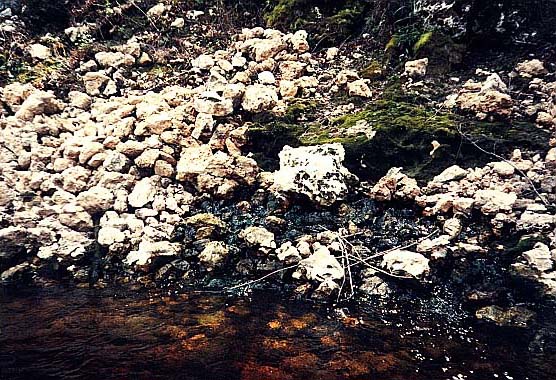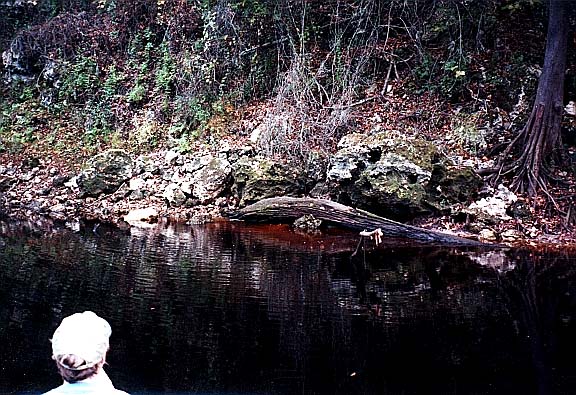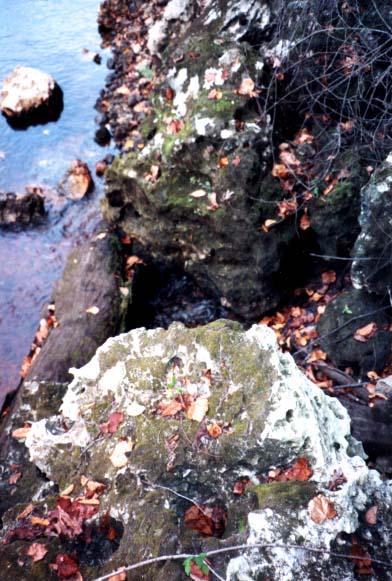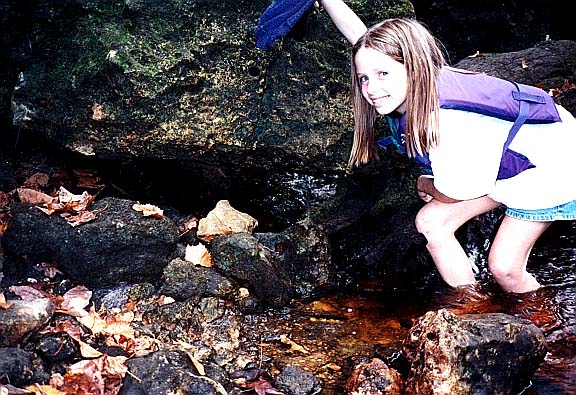Alapaha Rise Spring
Hamilton County
Summary of Features
- Scale -1st magnitude
- Scenery -excellent
- How Pristine? -platform and walkway around spring, house on one side, land cleared behind spring
- Swimming -excellent; outstanding snorkeling
- Protection -excellent
- Crowds -heavy on warm days
- Access -outstanding
- Facilities -fine
- Safety -excellent
- Scuba -yes
- Cost -$1 per person
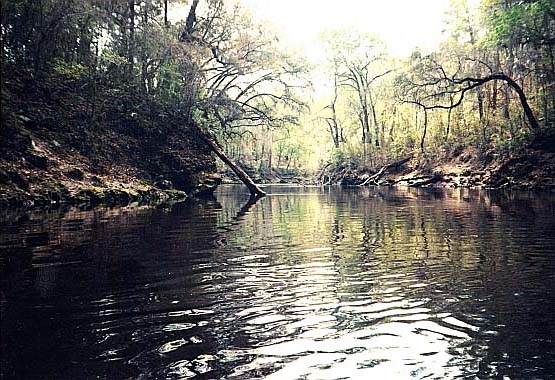
Directions
From Madison, take U.S. 90 east 2-3 miles until the fork with State Road 6. Take SR6 east, across the Withlacoochie River, and proceed about 12 miles to County Road 751. Turn right and drive about four miles to the Suwannee River. Take boat ramp at Hutch Gibson Park (on the NW side of the river--Google Maps and park link at www.theonlinefisherman.com/florida-boat-ramps/hutch-gibson-park-public-boat-ramp-aka-nobles-ferry), and canoe upriver about ¼ mile. A few hundred feet past the CR751 bridge, you will see water rushing out with great force on the left--it is the mouth of the spring run.
Spring Description
As its name suggests, Alapaha Rise Spring is likely the rise of a portion of the Alapaha River. Its water is dark, and it meets the Suwannee River about 1/3 miles above where the Alapaha River proper joins with the Suwannee. The spring rears up in an 80-foot-wide box canyon at the head of a 400-foot run. The walls surrounding the spring are vertical limestone (20-30 feet high) and pocked with holes, fissures, and fractures. The run, which is about 60 feet wide, discharges powerfully into the Suwannee River.
Rosenau et al. report there is a sink about 250 feet north of Alapaha Rise. At the bottom of the sink, water can be seen flowing toward the rise (1977, p. 133).
Use/Access
- Paddling into the mouth of the swift run is strenuous. After the first 20 yards or so, the current is not as strong and the headwater may be reached with relative ease. Despite the steep walls around the spring, visitors climb to the top and there is a rope swing and platform in a perimeter tree.
- At the lower end of the spring run, there is a dock leading to a house on the east bank.
- Across the Suwannee River from the mouth of the Alapaha Rise run is a small,UnnamedSpring (#1) waterfall. Water flows over rocks a few feet above theriver, and would be submerged when the river is much above normal. Thickgreen algae grow in the cascade. Water flowing from the spring has a sulfurousodor.
Upriver about 250 feet and across from the mouth of the Alapaha Rise runis another small, Unnamed Spring (#2). This spring lies beneath the middle of three boulders at the edge of the river and is only visible in time of drought when the river is well below normal. The little spring has small flow but two dramatic boils when the river level is lower than its issue point--the flows look like water fountains. Water from the spring has a sulfurous odor.
In their comprehensive compendium on springs in the Suwannee River basin, Hornsby & Ceryak (1998) identify and photograph two springs at the approximate location of the above-unnamed springs (SUW925974, p. 123, and SUW925975, p. 127). However, neither of these springs looks much like the springs described above.
Personal Impressions
Like nearby Holton Spring, Alapaha Rise is a spectacular and pristine site. Although it is near the bridge and highway and there is a road directly above it, it feels remote and receives very few visitors. Paddling into the spring is hard work and a lot of fun. Its box-canyon appearance is unique among springs of Florida.
Nearby Springs
- Anderson Spring
- Holton Spring
- Lime Spring
- Ellaville Spring
- Little Gem Spring
- Falmouth Spring
- Adams Spring
- Morgan's Spring
- Suwannacoochie Spring
Other Nearby Natural Features
- Suwannee River State Park
- Withlacoochie River
- Two Rivers State Forest
An Essay on Alapaha Rise Spring
Located in Hamilton County halfway between Jasper and Live Oak, Alapaha Rise is in the pinch of real estate between Interstates 10 and 75. It's a rise because it is part of the Alapaha River, which flows south from Georgia between the Suwannee and Withlacoochie Rivers. At some point, some of the Alapaha goes underground. The rest of the river flows into the Suwannee just below where CR 751 crosses the river.
From I-75 or I-10, take SR 6 to CR 751 and go south to the Suwannee. After the agricultural weigh station on the left, there is a boat ramp on the right in Gibson County Park. Alapaha Rise is just 100 yards behind the agricultural weigh station, but the land around it is private so you'll need to paddle into it from the boat ramp. Go upriver under the bridge and you'll see the opening on the left.
Now comes the hard part. The entrance to Alapaha Rise is only 50 feet wide and less than 10 feet deep, but an average of 520 million gallons of water comes out of it each day--that's about 6,000 gallons of water per second. So you have to stroke with maximum force to get in. After the first 25 yards, you’ve made it and can ease off. Limestone walls stretch upward until they form a 40-foot mini-gorge and box canyon around the rise.
The walls are sheer and honeycombed with thousands of holes as if drilled by a lunatic. To borrow a phrase from Frost, the water is "lovely, dark, and deep," and roils from the upwelling river. According to divers, the vent is 150 feet wide, and you take their word for it because the tannin-laced water does not invite swimming. It is a primeval scene, and you will have it all to yourself.
Canoeing out is exciting, for now your paddling will shoot you through the entrance at great speed--just hope a speedboat is not coming by on the Suwannee at that moment. Directly across the river is a little spring cascade, and the exposed limestone, caves, sandbars, and extremely high natural levees along this stretch make it one of the prettiest spots of the entire Suwannee River.

